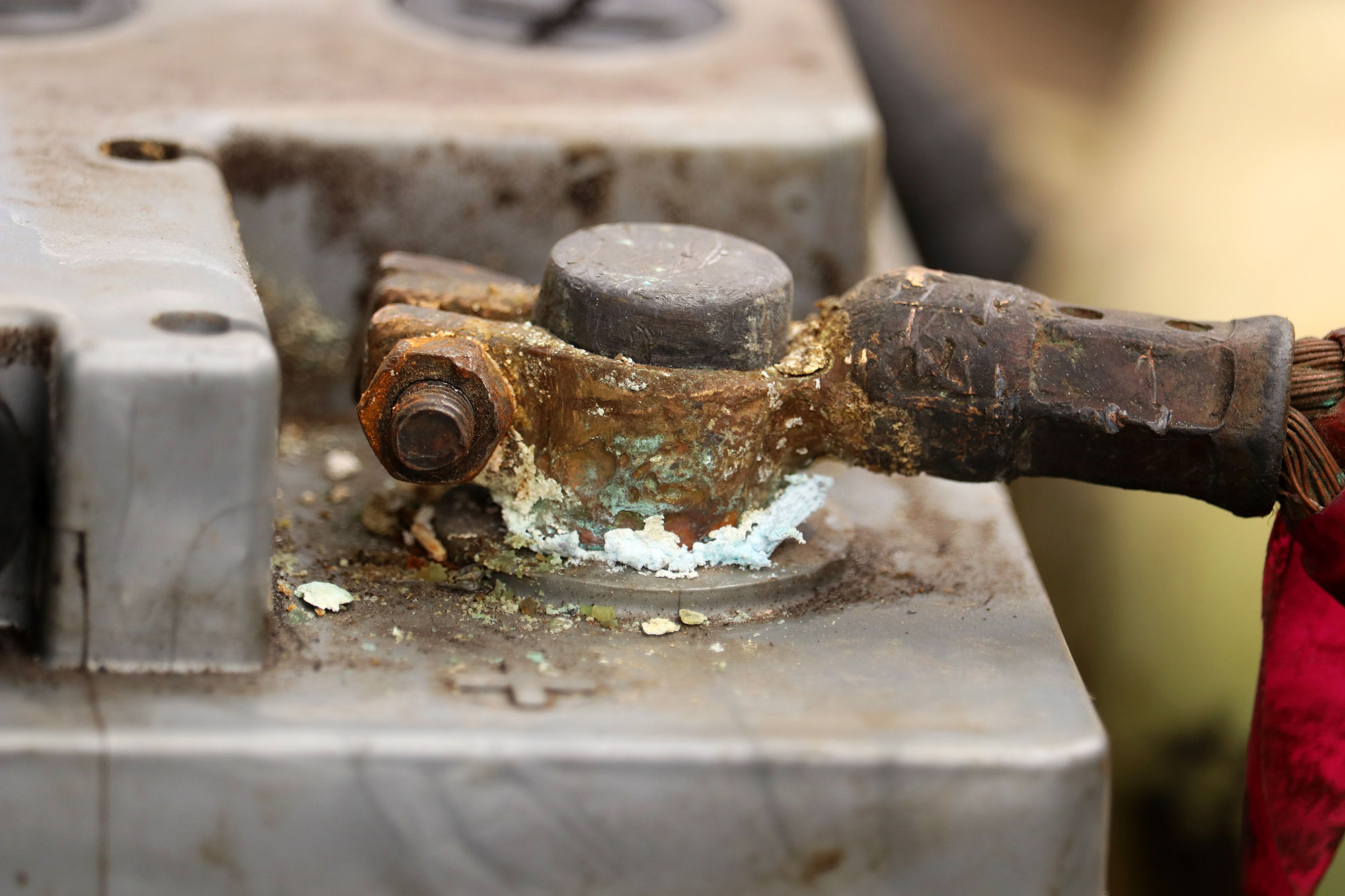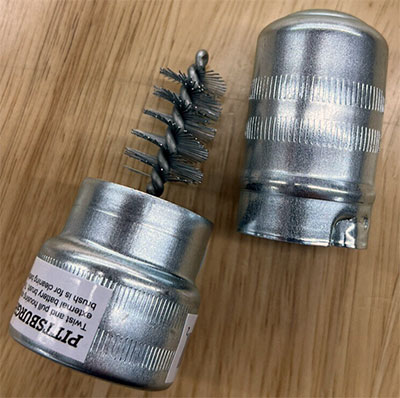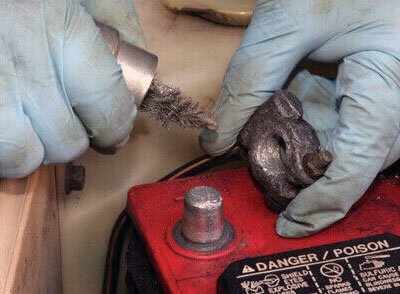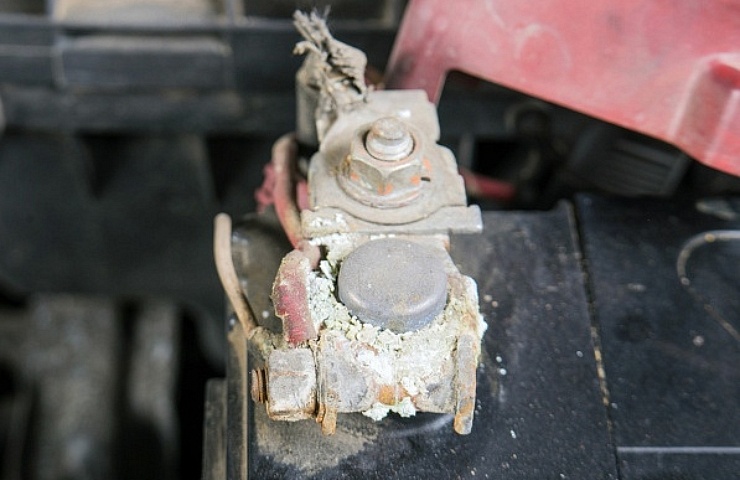Contents
What Is Car Battery Corrosion?
Nearly all car batteries are filled with sulfuric acid surrounding a number of lead plates. That acid can produce a chemical reaction with the metal battery terminals over time, causing corrosion near the battery terminals.
This typically appears as a white, blue, or green powder building up on one or both of the battery terminals. It is caused by the hydrogen gas emitted by the battery acid reacting with the oxygen outside the battery.

Corrosion usually looks like white, blue, or green powder.
The corrosion results from a natural chemical process and isn’t necessarily cause for alarm. Be sure to inspect the plastic case of the battery for any cracks or bulges where the acid might be leaking. But often, corrosion happens on otherwise healthy batteries.
Shop now for auto batteriesA little bit of battery corrosion is usually not a problem. It should be cleaned following the steps described below. Avoid touching it with your hands, because it is acidic and can cause chemical burns.
If the battery terminal corrosion continues to build, it could seep between the battery terminals and the cable ends. That could disrupt the connection and make it difficult for your car to start. Fortunately, it’s a simple task to clean battery terminals and cables.
Shop now for battery terminalsThe Cleaning Process: Step by Step

Battery terminal brushes are handy and very inexpensive.
To clean your battery terminals and cables, first gather these common household items:
- Acid-resistant gloves (nitrile, rubber, or latex) to protect your hands
- Wire brush, battery terminal brush, or old toothbrush
- Baking soda
- Water
- Wrench or pliers to remove battery cables from the battery
- Old rags or paper towels
- Petroleum jelly, such as Vaseline

With a little effort, the terminals can be cleaned up and free of corrosion.
Next, follow this step-by-step process for cleaning your battery terminals and battery cables.
- Mix baking soda with water to create a cleaning solution. The baking soda is alkaline and will neutralize the acidic corrosion on the terminals and cables. Mix roughly a tablespoon of baking soda into about two cups of water. (Or might consider using a battery terminal cleaner spray.)
- Carefully remove the battery cables with the wrench or pliers, starting with the negative battery terminal first. The negative terminal is marked with a “-” symbol, whereas the positive terminal is marked with a “+” symbol. It’s a good idea to have a battery memory saver tool to maintain power and keep the settings on your radio intact. You should always disconnect the battery when working around it to ensure you don’t accidentally create a dangerous spark.
- Apply the cleaning solution to the battery terminals and cables. Use the old toothbrush or a rag, and allow the solution to dissolve the corrosion. Reapply as necessary to saturate the corrosion and make it easier to remove.
- Scrub the terminals and cables. Using a wire brush, a toothbrush, or a dedicated battery terminal brush, agitate the cleaning solution and scrape away any remaining corrosion.
- Clean and wipe up the terminals. Use clean water to wash away any residue, then dry the battery, terminals, and cables with the rag or paper towels.
- Apply petroleum jelly to the battery cables. This helps to lubricate the metal surfaces and can help slow the corrosion process in the future.
- Reconnect the battery cables to the battery. Start with the positive battery terminal, then the negative.
That’s all. It usually takes less than 20 minutes to clean corrosion from battery terminals. Consider checking the battery for corrosion two or three times a year and cleaning it as necessary.
Nobody wants to get stuck with a car that won’t start in bad weather, especially when preventing the problem is so fast and easy.
Shop now for battery terminal brushes




